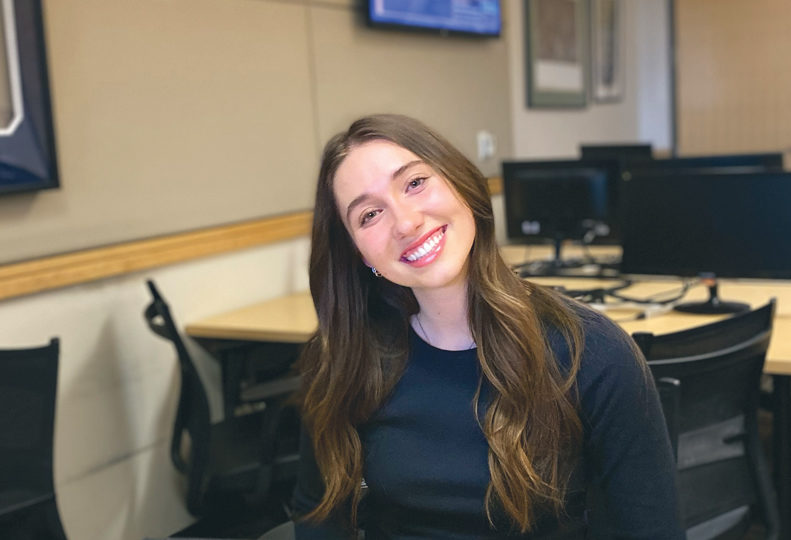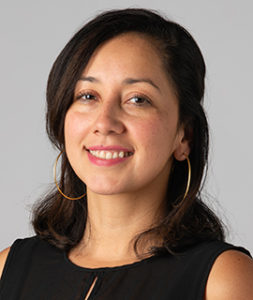
University of Idaho students assess risks, invest real money
Trading program helps prep finance majors

Catherine Hubinger, a finance major in the University of Idaho Barker Capital Management and Trading program, will get her own $10,000 portfolio to manage and invest in the fall.
| University of IdahoStudents at the University of Idaho's Barker Capital Management and Trading program are investing with real money and the consequences that go with it.
They're also using that real-world experience to attain job placements upon graduation.
“The genesis of the idea is to get students exposure to the investment universe and not only be able to take positions, take risks, and learn how to manage their investments for the future but also how to manage risk,” says Brian "Duff" Bergquist, the program's director.
Over the years, students involved in the program have gone on to work in financial management positions with companies such as Seattle-based Darigold Inc., Chicago-based ADM Milling Co., and Boise, Idaho-based Lamb Weston Holdings Inc. and J.R. Simplot Co., among others.
Catherine Hubinger, a sophomore in the program, says she is currently part of a group of student traders who are managing $40,000 and investing in real estate, communications, and utilities. In the fall, she will be given her own portfolio with $10,000 to invest and manage. This summer, she will take part in Girls Who Invest, a program through the University of Pennsylvania, and intern with Wasatch Global Investors, in Salt Lake City.
“The Barker program is such an amazing resource to have,” Hubinger says. “I talked a lot about the program in my application (for Girls Who Invest) because most schools don’t have what we have.”
Tony Drake, a Barker Capital Management board member and an agricultural derivatives consultant in Boise, says that it's a small percentage of students that go into traditional trading jobs in Chicago or New York. Rather, the skills that students learn in the program, such as presenting an investing plan before their peers and defending that position and the risks involved, prepare students for a wide range of financial jobs with corporations.
“In this world today, corporations and businesses have to deal with more risk for their bottom line,” Drake says.
Lisa Victoravich, dean of the College of Business and Economics, where the program is housed, concurs and says the program sets itself apart from other trading programs around the country by emphasizing risk management.
“It’s not just looking at a trading equity strategy,” Victoravich says. “Additionally, we work closely with (the College of Agriculture and Life Science) because risk management strategies are also very important in the agricultural world.”
Bergquist, who became the director of the program in August after being a professor of finance at Whitworth University for about 16 years, says the next iteration of the Barker Capital Management program includes students putting together case studies for local companies and opening access to the program to all University of Idaho students. Additionally, he aims to bring more awareness of the program to local firms and companies.
“It’s a very unique program,” Bergquist says. “If I didn’t know about it 90 miles away, how do employers in Spokane know about it?”
The Barker Capital Management and Trading program was started in 2004 with a donation from Rotchford “Rotchy” Barker, a University of Idaho class of 1961 alum, former commodities and futures trader, and lifelong member of the Chicago Board of Trade.
Aside from teaching finance at Whitworth University, Bergquist also spent nearly 16 years trading in European markets for companies such as Morgan Stanley Capital Services LLC, Lehman Brothers Inc., and The Goldman Sachs Group Inc. When he learned about the Barker program, he saw a chance to combine his trading background with teaching.
“The opportunity to marry my background in trading with my experience in higher education and have an impact was very appealing to me,” Bergquist says. “It’s an opportunity to help make a great program better … and engage students in a manner that increases their drive or their interests in the markets.”
Students in the program must take three courses worth three credits each and two trading seminars. Completion of all required courses earns students, typically finance majors, a Trading and Capital Management certificate. The core classes include an introduction to trading and a course on market trading strategies. For their third core class, they can choose between a course on derivatives and risk management or a course on understanding and using futures and options markets.
The trading seminars are graded as pass/fail. Each seminar has its own rubric for a pass, Bergquist says, and it is not dependent on whether they make or lose money.
"All traders will lose money on certain trades, and it is a very important part of the learning process," he says. "Losing money on a trade is often a better teacher than making money."
Bergquist requires students to track and classify each trade they make and write a summary of each trade.
"One of the most important aspects for each trader is to learn how to manage risk," Bergquist says. "I have access to all the trading accounts and monitor the trades we put on. We discuss positions during each class ... I have the final say on (pursuing) or closing out a trade that doesn't fit our risk profile."
Currently, 29 students are enrolled in the trading seminars, not including students taking courses in preparation to be admitted to the seminars, Bergquist says. Students meet in person at the U.S. Bank Trading Floor, in the J.A. Albertson Building, on the University of Idaho’s Moscow campus. The classroom-turned-trading floor is equipped with 22 trading stations, a Bloomberg Terminal that allows the students to monitor and analyze real-time financial market data, and an interactive market wall that displays live market data. The funds that students use to trade are taken from the Barker Endowment Fund, which currently stands at just over $1 million, Bergquist says.
Bergquist says many firms in the Inland Northwest need to have risk management due to their exposure to things such as energy, natural gas, and electricity.
“If you look around the area, anybody that has grain—farmers and ranchers—they all have commodity risk,” Bergquist says. “We’ve begun doing case studies with firms in which they’ll give us a problem, and we’ll go out and try to create a plan to mitigate risk.”
Students in the program also receive mentorship from the nine-person Barker Capital Management and Trading program board of advisers, Drake says.
“I’ve had students text me and say, why is this happening in the market?” says Drake, who also has a background trading in New York and Chicago trading floors. “I encourage them to text me, call me, email me, whatever you want to do, and we’ll talk markets.”
In addition to mentoring students, the board’s other objectives include helping students get hired by a corporation or business upon or before graduating and working with the university to help alert them of changes in the business world so that the program's curriculum can reflect the industry’s present needs.
For example, a few years ago, Drake and the other board members were hearing from corporations that they wanted more students with knowledge of foreign exchange. Drake and the board members then alerted the university, which in turn began to incorporate currency and foreign exchange teachings for the students.
“What we try to do is just help be a partner and ... identify trends,” he says.
As Bergquist completes his first year as the director of the program, he says he hopes to continue the vision set forth by Barker, create a lifetime interest in markets not just for finance students but for all University of Idaho students, and create a platform to attract corporations seeking qualified students in the Inland Northwest and beyond.
“My main goal is to create a program that is desirable to employees and employers, and they actively seek out our graduates,” Bergquist says. “I know there are some students with aspirations to work in Chicago or New York. We want to hopefully give them a recognizable platform.”



![Brad head shot[1] web](https://www.spokanejournal.com/ext/resources/2025/03/10/thumb/Brad-Head-Shot[1]_web.jpg?1741642753)
